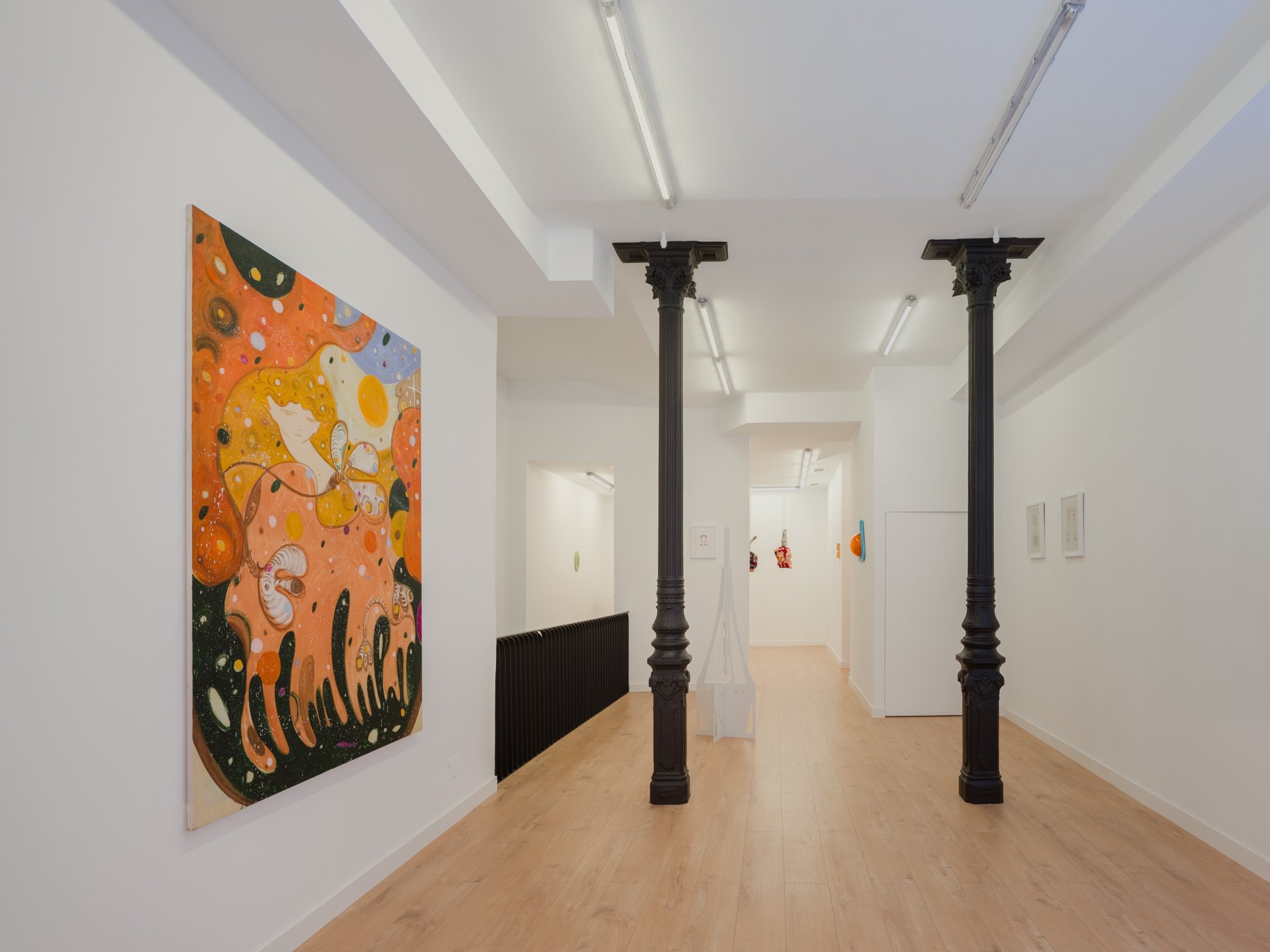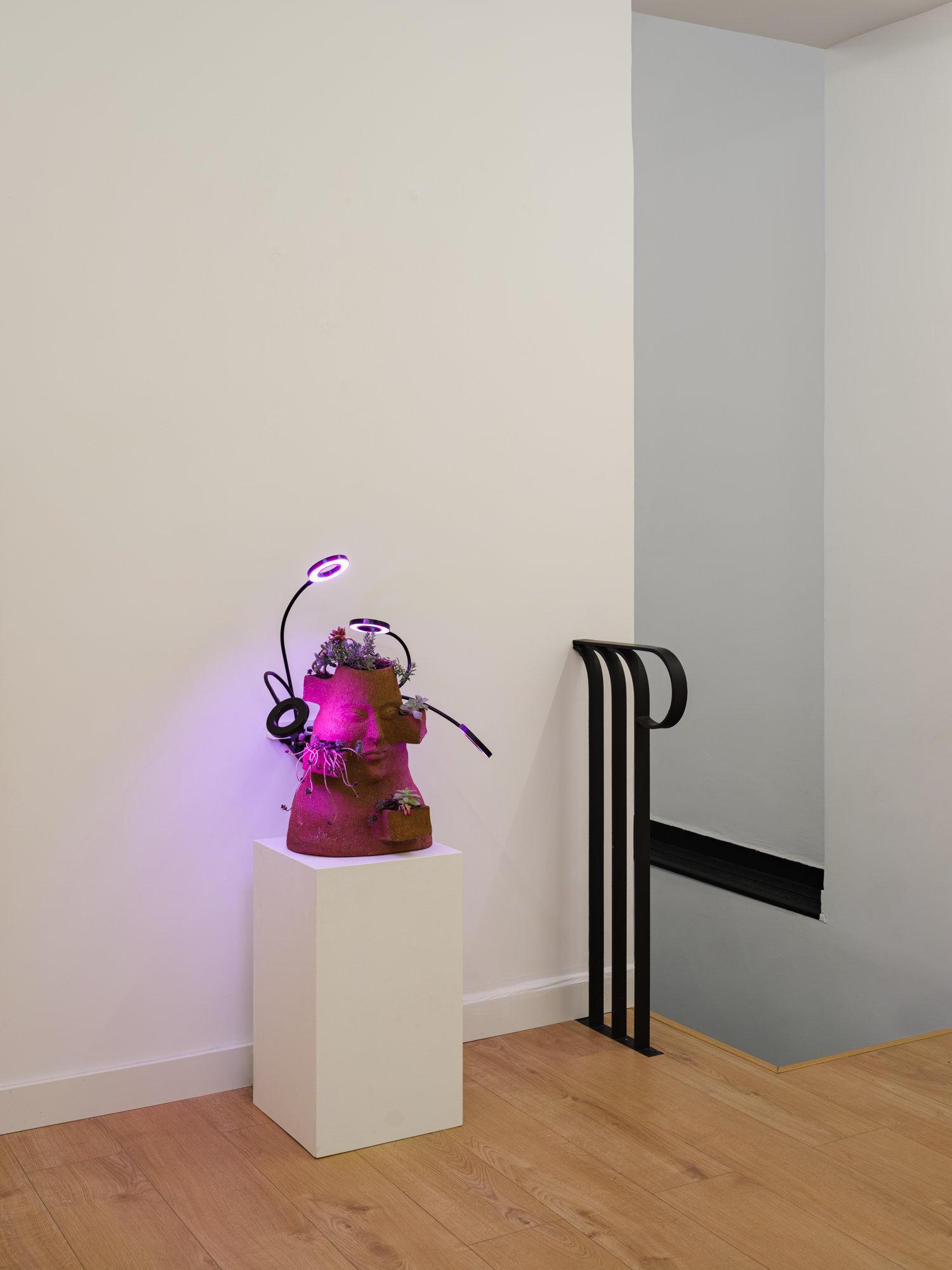








Processing the past and digesting the future
Saelia Aparicio, Yulia Iosilzon, Anna Perach, Amba Sayal-Bennett and Rafal Zajko,
28 April - 10 June 2023
“ The act of eating is not merely about burning calories and producing energy, but it is in fact about replacing each individual part of your body...The flow of food...starts when it is harvested and continues as it is stored, cooked, fermented, chewed in the mouth and digested. In other words, the act of eating, seen from both the perspective of the body and the perspective of food, is inseparable from the flow of time...”
Fukuoka Shin-Ichi, Diet and Life: For Humans to Become People
Taking the digestive organ as a metaphor for the exhibition space Processing the past and digesting the future, curated by Huma Kabakci, with artists Saelia Aparicio, Yulia Iosilzon, Anna Perach, Amba Sayal-Bennett and Rafal Zajko, explores the digestive systems on a micro and macro level in the context of our socio-political and natural environments.
In the context of the exhibition, the connection between the gut and the nervous system of the gut, also known as the enteric nervous system (ENS), has been used as a conceptual framework to create a more embodied and immersive experience in Badr El Jundi. By incorporating different stages of digestion and the digestive system as a metaphor responding directly to the space, the works in the exhibition encourage visitors to think critically about the complex processes that shape our social and political environments.
With so many layers of the past and so much bombardment of information about the present, how do we navigate the future? The artists in the exhibition will respond site-specifically to the gallery as a bodily organism to “process” and “digest” our day-to-day internal and external crises. In her multi-disciplinary practice, Saelia Aparicio operates within the paradoxical spaces that the visitor can find in what is considered normal, utilising a unique symbolic system to represent and digest a stark reality. Through topics such as pollution, climate crisis and invasive species, Aparicio’s work navigates between an alternative universe, an ecosystem she creates for the visitor to imagine with her through the materials she uses, the objects she builds, and the shapes she builds. In her paintings, Yulia Iosilzon incorporates vibrant streams of colour and texture, grounding her works within narrative and anecdotes. The artist cites mythology, children’s illustration and theatre as sources of inspiration. With a playful element and experimentation throughout her paintings and ceramic installations, Iosilzon repeats symbols and motifs, building up an iconographic arsenal to comment on personal, social and political issues. Her selected paintings for the exhibition show a bodily relationship to nature, blossoming and metamorphosing. Anna Perach’s artistic practice explores the dynamic between personal and cultural myths by interviewing female archetypes into sculptural hybrids to examine ideas of identity, gender, and craft. Through the tufting technique, where she makes a hand-made carpet textile, she transforms them into wearable/interactive sculptures. In her drawings for the exhibition, Perach explores ideas of identity, gender, psychoanalysis and bodily experiences. Amba Sayal Bennet’s recent work explores Chandigarh in post-colonial India and fascist architecture in Rome, engaging and critiquing modernism to project a particular vision of the future. With a focus on architecture, Sayal-Bennet is interested in the role of modernism in expressing certain ideologies and social functions from an embodied perspective and the drawings generated on the production and construction of buildings (including instructive drawings, iagrams, maps and abstractions of sites). Especially in her drawings, digestion is used as a metaphor through translation- metabolising, breaking a drawing apart and reimagining a section. Sayal-Bennet responds to the material similar to paper that bends and folds for the site-specific free-standing sculpture she made from powder-coated mild steel. Rafal Zajko’s works deal with issues around the industrial past, exploring its environmental impact concerning working-class heritage and queer identities through bodily references, especially in digesting and breaking down. His sculptural practice incorporates diverse materials and processes, including ceramic, ventilation systems, prosthetics, and performance, to examine Polish folklore, science fiction and queer technoscience. His sculptures in the exhibition include synthetic urine, bodily shapes and different materials emphasising the industrial processes and machinery that resonate with and honour his heritage.
Responding to the exhibition space and design reminiscent of an organ or connected organs, the artists delve into scientific and allegorical research investigating methodologies of physical healing, processing and care through their body of work.